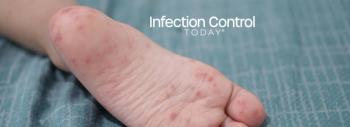
- Infection Control Today, January/February 2023, (Vol. 27, No. 1)
- Volume 27
- Issue 1
Hot Topics in IPC: Health Care Associated-Infections, COVID-19, Ebola, Dengue
Saskia v. Popescu, PhD, MPH, MA, CIC, covers updates on health care associated-infections, masking at schools, and Ebola in Uganda and Dengue in Arizona. Read on for all the details.
A
Health Care Associated-Infections (HAIs)– Up in 2021
This isn’t surprising either, and for many individuals, this was expected based off personal experience, but it was nice to see the official
Thankfully, there was not a significant change to surgical site infections (SSIs), but those were only in the 10 procedures tracked. The CDC did note an 11% increase in abdominal hysterectomy SSIs. Interesting, there was a 14% increase in hospital onset MRSA bacteremia and a 3% decrease in hospital onset Clostridioides difficile.What’s interesting is that if we look at the
What is even more interesting was the 15% increase in hospital onset methicillin-resistant Staphylococcus aureus (MRSA) bacteremia and the 11% decrease in hospital onset C difficile. I mention this because it points to improvement in how we are managing HAIs in the face of the pandemic. The capacity to address a serious rise in HAIs in the second year of a pandemic, while rolling out vaccinations and managing novel variants, is a feat that has gotten little recognition. One piece, though, I find interesting is the from an 11% decrease in C difficile cases to 3% in this most recent report. It begs the question if we’ve overcorrected so much with discussions around cleaning and disinfection related to COVID-19 in the first year of the pandemic, that it’s rippled into our general behaviors and practices.
Masks – They Work!
A
Elevator Updates on Ebola and Dengue!
The Ebola outbreak in Uganda has officially
Articles in this issue
almost 3 years ago
Bug of the Month: Wasting Awayalmost 3 years ago
Rare Infectious Diseases: A Tutorialalmost 3 years ago
The Infection Preventionist’s Formula for Providing Constructive Criticismalmost 3 years ago
How to Address Concerns About the Influenza Vaccinealmost 3 years ago
The Fight Continues: World AIDS Day 2022Newsletter
Stay prepared and protected with Infection Control Today's newsletter, delivering essential updates, best practices, and expert insights for infection preventionists.






